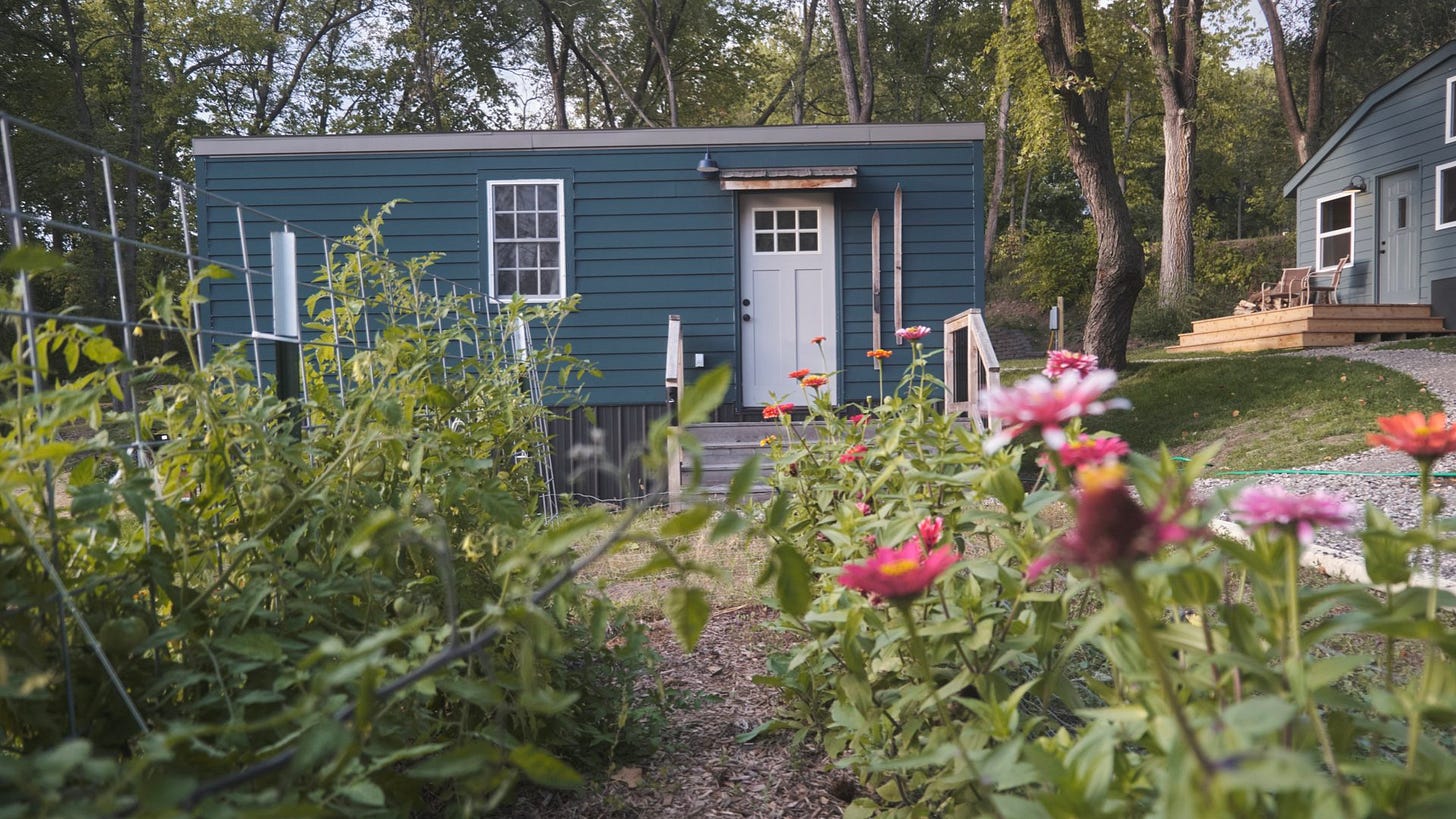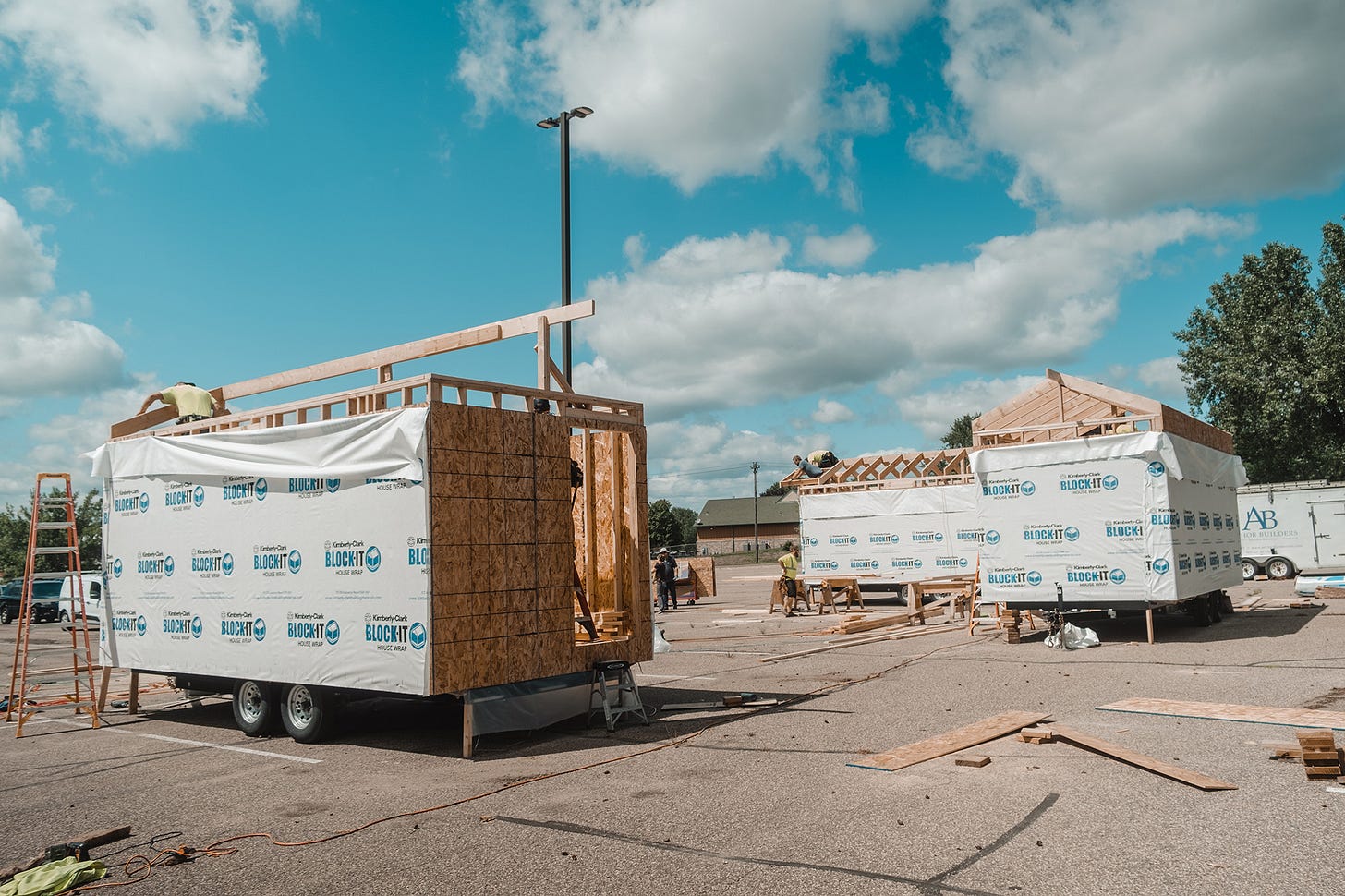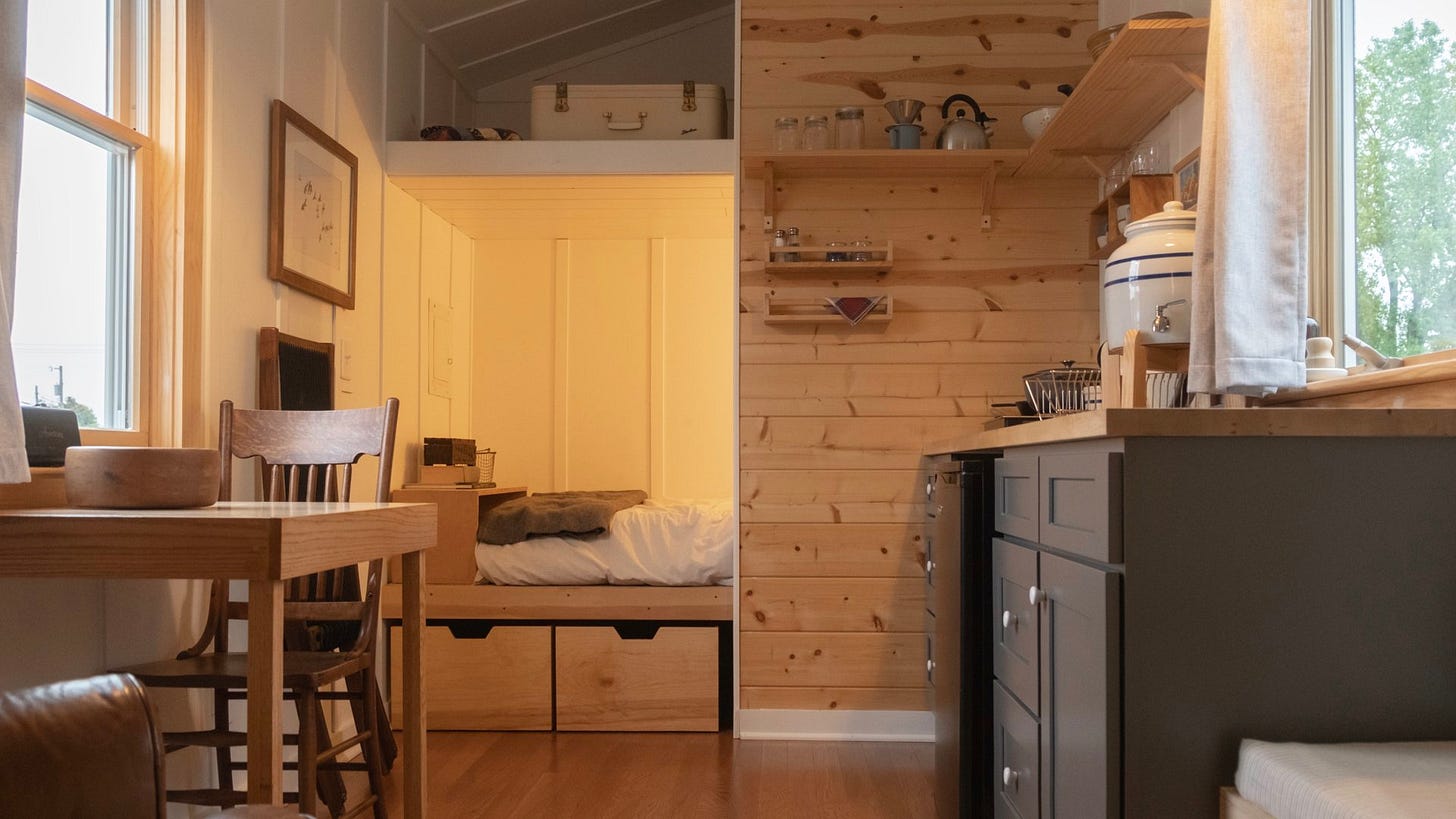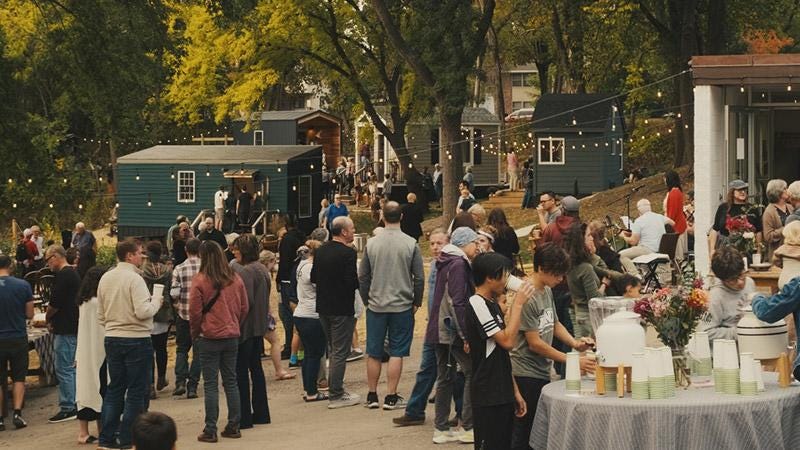
In 2022, Mosaic Christian Community in St. Paul, Minnesota, opened a village of six tiny homes for people experiencing chronic homelessness. The concept was simple yet powerful: put roofs over the heads of those who need them most, all while fostering a supportive community.
The project was the first in a growing network of tiny home communities built on faith-owned property by an organization called Settled. To date, they have established two such villages—which they call “Sacred Settlements”—adjacent to local churches, with a third currently in the planning stages. Their model has gained traction both as an effective approach to alleviating chronic homelessness and as an inspiration for houses of worship seeking to transform their property for social good.
These tiny homes are an incredible model for the faith-based housing movement, with the potential to slot into communities around the country.
The Model
Settled’s approach is built on five key components: intentional neighbors, permanent homes, cultivated places, purposeful work, and supportive friends. Each of these elements is backed by extensive research on homelessness, ensuring that residents receive the support they need to successfully transition into stable housing.
The presence of intentional neighbors is of particular importance. Settled recruits volunteers who choose to live alongside formerly homeless residents, offering them a support network. These individuals, often church members or community volunteers, provide friendship and guidance and foster a crucial sense of belonging and stability. For the chronically homeless, these relationships are absolutely vital to success on their journey.
Another vital aspect is purposeful work, much of which serves to further cultivate and maintain their village. Residents engage in activities such as maintaining the community garden, cleaning, or creating artwork—tasks that not only beautify their surroundings but also provide them with meaningful, paid work. This income helps cover their modest rent, which is around $200/month. More importantly, work restores a sense of dignity and agency.

The Hard Facts
Each home is just 140 square feet and costs between $25,000 and $40,000 to build, with money raised upfront primarily through private donations. Costs are kept low through construction on an off-site production facility, then the homes are transported to their permanent locations for interior finishing. Despite their compact size and cost-effective construction, these tiny homes are designed to be durable and well-insulated to withstand Minnesota winters.
Volunteer labor also plays a role in keeping costs low, with a variety of faith communities and civic groups contributing. Volunteers assist with construction, site preparation, or gardening. Some even mine estate sales and antique stores for quality furnishings that make each home feel unique and cozy.
Another cost-saving measure is the shared use of facilities. Residents have access to communal kitchens, bathrooms, and social spaces within the church, as well as the village’s shared garden. This reduces utility infrastructure costs and allows the homes to remain small, simple, and affordable.

More Than Just a Roof Over Their Heads
While Sacred Settlements offer a practical solution to homelessness, their impact goes beyond shelter. For those that build them, the experience is deeply transformative, fostering spiritual renewal and community growth.
For the churches that host these villages—and even for those that simply contribute time and resources—the initiative has been a source of revitalization. “Coming out of COVID, a lot of churches were listless, didn't know what they were going to do,” says Fred Ogimachi, Settled’s Operations Manager. “This transforms the church. If you were to interview [the pastors], they’ll tell you how much it's done for their churches.”
Ogimachi points to monthly community dinners as an example of this transformation. Each settlement hosts a gathering where church members, neighbors, and volunteers come together to share a meal. Attendance often far exceeds the number of church members, with dozens and sometimes hundreds of people from the surrounding community joining in. These attendees come from the surrounding neighborhoods and from civic organizations that have lent volunteers to the projects.
The dinners give them an opportunity to check in on the project and its residents while also proving that the settlements bring in new life and energy to the churches that host them.

Lessons for Faith-Based Housing Efforts
As more churches explore ways to repurpose their land, Settled’s model stands as a beacon of possibility, demonstrating that even small congregations can make a profound difference in their communities. These kinds of projects can give cities and towns desperately needed housing solutions, all while strengthening faith communities and enabling them to do more for their surroundings.
Settled also shows us that these projects can be done carefully and intelligently while also being done quickly. They’re currently expanding their model, and the inquiries from across the country are pouring in. It’s clear that there’s demand for more tiny home villages, but Settled is just one organization and scaling up is a difficult task.
This blog and the Faith-Based Housing Initiative as a whole is trying to aid the process of scaling up. We’re building the capacity for houses of worship to engage with the development process and preparing them to do more with their land. If this sounds like it’d fit your community, get in contact with us today to learn more about how to get involved.
Together, we’re going to build great things!
Eli Smith is a senior at Dartmouth College studying Religion. He is the Faith-Based Housing Initiative’s Research Fellow.




Another great story. It has all of the elements that are needed for healthy community, not just healthy community for the unhoused for any healthy community. We all need to catch on to this idea of purposeful belonging and support of one another. Thank you for all of your research and time in sharing ideas